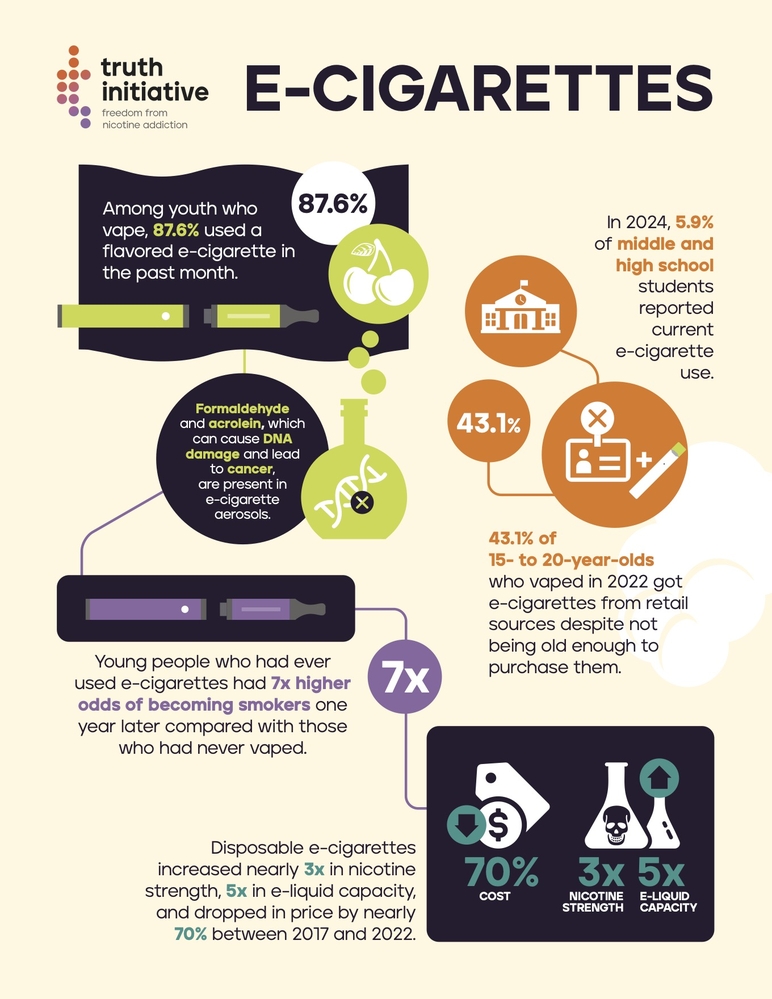Comparing Health Risks: E-Cigarettes vs. Combustible Cigarettes
While both deliver nicotine, the health risks differ significantly.
Key Findings:

- Toxins & Carcinogens: E-cigarette aerosol contains fewer harmful chemicals than cigarette smoke, which has over 70 known carcinogens. However, e-cig aerosol is NOT harmless “water vapor” and contains ultrafine particles, heavy metals (lead, nickel), volatile organic compounds (VOCs), and flavorants like diacetyl (linked to lung damage).
- Nicotine: Both deliver highly addictive nicotine, harmful to adolescent brain development (until age ~25) and associated with cardiovascular risks. Some vapes deliver nicotine faster than cigarettes.
- Lung Damage: E-cigarette or Vaping Associated Lung Injury (EVALI) caused severe illness/death, primarily linked to Vitamin E acetate in illicit THC oils. However, even nicotine vaping is associated with chronic lung inflammation (“popcorn lung” risk), impaired immunity, and potentially increased asthma risk.
- Long-Term Effects: Comprehensive long-term studies (20+ years) are still lacking for e-cigarettes. Combustible cigarettes are unequivocally linked to cancer, COPD, heart disease, stroke, and numerous other fatal illnesses.
Specific E-Cigarette Concerns
- Flavoring Chemicals: Many flavor additives have unknown safety profiles when heated and inhaled (e.g., diacetyl, cinnamaldehyde).
- Exposure Levels: Users may vape more frequently/intensely than they smoked, potentially increasing overall exposure to toxins.
- Youth Epidemic: High nicotine levels and appealing flavors contribute to alarming addiction rates among teens, negatively impacting developing brains and acting as a gateway for cigarette use.
Potential for Harm Reduction?
The strongest evidence indicates that exclusive e-cigarette use is likely less harmful than continued smoking for adult smokers unable or unwilling to quit. Switching completely eliminates exposure to the vast majority of tobacco combustion toxins.
However: E-cigarettes are not FDA-approved cessation tools like nicotine gum or patches. They pose unique risks and are not safe. The safest option is to quit all tobacco and nicotine products.
The Bottom Line
E-cigarettes are not harmless. While likely less harmful than combustible cigarettes for established adult smokers who completely switch, they still pose significant health risks, including exposure to toxicants, lung damage, and nicotine addiction. Their impact on youth initiation and long-term health consequences remains a critical concern.
No tobacco or nicotine product is safe. For smokers, seeking cessation methods approved by health authorities is the best course. For non-users, particularly youth, using e-cigarettes introduces new health risks.









